Kate Kaden’s 18 Frugal Living Tips To Potentially Save You Thousands

Between rising costs and stagnating wages, many Americans are stressed about their finances, as reported by CNN. Finding ways to save money helps alleviate that stress and gets you closer to achieving your financial goals.
In a recent YouTube video, personal finance influencer Kate Kaden offered 18 tips on saving money and living frugally. Try these ideas to lower your spending this year.
Trending Now: 6 Things the Middle Class Should Sell To Build Their Savings
For You: 6 Unusual Ways To Make Extra Money (That Actually Work)
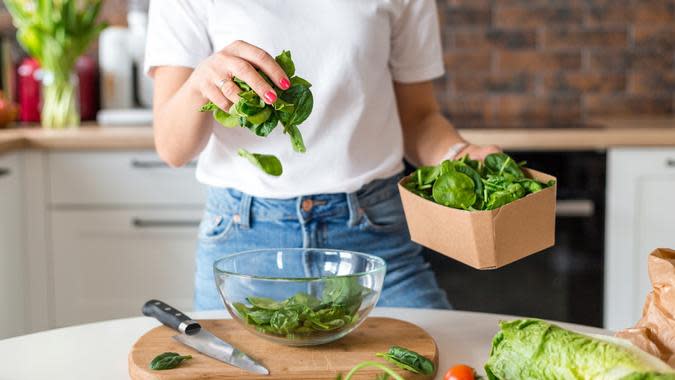
Use Up the Ingredients You Have at Home
Groceries are an essential part of any household budget — you can’t stop buying them, even when prices rise dramatically. Although inflation has slowed down, grocery prices are still high and draining people’s finances, according to The Washington Post.
Kaden said to use the ingredients you have at home to prepare meals before shopping for groceries again. Specifically, she recommended inputting the ingredients you have on hand into ChatGPT and asking the AI tool to suggest meals you can make with those ingredients. “I was a little resistant at first, but I think it’s super helpful in using up what you have in your pantry,” she said.
The average American household spends more than $1,500 every year on food that goes to waste. Implementing this tip will help ensure you use up your groceries before they go bad, saving you money overall.
Try This: 5 Unnecessary Bills You Should Stop Paying in 2024
Be Aware: 6 Clothing Items Frugal People Keep for Many Years
Earning passive income doesn't need to be difficult. You can start this week.
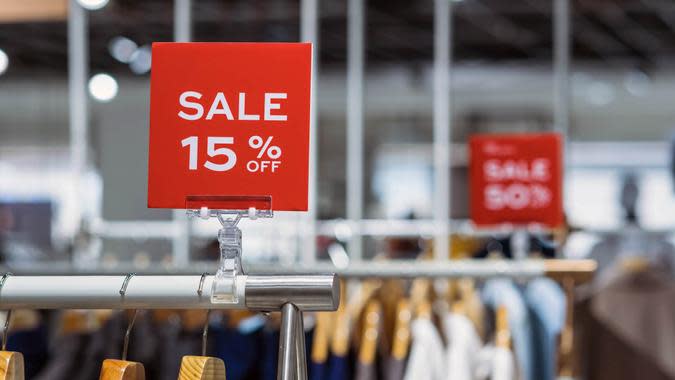
Shop at Outlet Stores
If you need new clothes or accessories, Kaden suggested shopping at outlets rather than regular stores. “You can find some of your favorite brands at a super discount” at outlet stores, she said. Even if you don’t care about name brands, you can find high-quality products for budget-friendly prices at these stores.
Check to see if there’s an outlet mall in your area. If there is, it may be worth waiting until you need several items before shopping at that mall. Go with a set budget in mind, though, so you aren’t tempted to buy things you don’t need just because of the attractive discounts.
See More: 6 Things Frugal Boomers Never Buy

Plan Free Date Nights
Going on the occasional date night with your partner can strengthen your relationship and increase your likelihood of staying together, according to the Institute for Family Studies. Unfortunately, many traditional date ideas, like going out to dinner or seeing a show, can put a strain on your finances.
Kaden’s solution is to plan free date nights instead. Some of the free dates she suggested include:
Hiking
Romantic stargazing
A beach day
Binging a TV show together on the couch
There are plenty of fun activities to do with your partner that don’t cost any money. Brainstorm some ideas together so you can enjoy your next date night without worrying about money.

Use the GasBuddy App
Transportation is another essential expense and many families rely on personal vehicles to get around. That means most are stuck paying for gas, no matter how high prices get.
As of July 2024, the national average price for a gallon of gas in the U.S. was around $3.50, down 12.5% from a year earlier, according to the U.S. Energy Information Administration. Drivers in states like California, Washington and New York spend more than the national average on each gallon of gas.
Driving less is one option to save money on gas. Kaden offered another option — using the GasBuddy app to find the lowest gas prices in your area.
GasBuddy is a free app that shows the price per gallon at all of the gas stations near you. By checking the app, you can make sure you go to the gas station with the lowest price. Kaden also mentioned that GasBuddy lets you earn rewards, which you can redeem for discounts on future gas purchases, increasing your savings.

Use Cash-Back Apps
Cash-back apps offer rewards when you buy eligible items, helping you save a little on each purchase. Kaden uses Fetch Rewards and Receipt Hog, but there are many other cash-back apps to choose from. Find apps that offer rewards on the things you buy most, like gas, groceries and other essentials.
“Every time you get a receipt, get in the habit of snapping it,” Kaden recommended, to redeem rewards on your eligible purchases in the cash-back apps. You can typically redeem your rewards for Amazon gift cards, PayPal cash or even a transfer to your bank account. The rewards may seem small initially, but they can add up quickly if you consistently redeem the offers.
Read Next: I’m a Self-Made Millionaire, but I Still Opt For the Budget Versions of These 6 Items
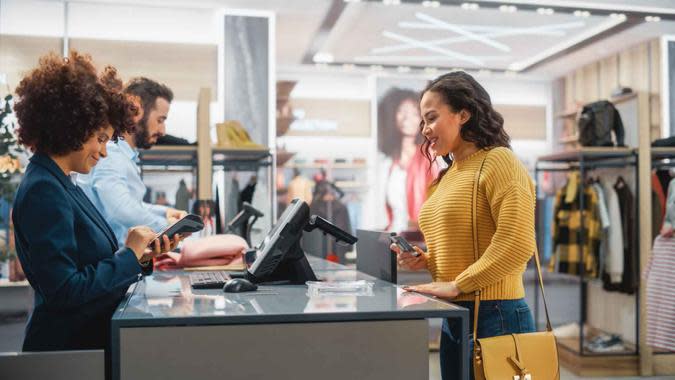
Avoid Impulse Purchases
The average American makes six impulse purchases per month, totaling over $150, as reported by PR Newswire. In a year, that adds up to more than $1,800 in impulse spending. Eliminating these spur-of-the-moment purchases can make a big difference for your budget.
Kaden recommended putting nonessential items in your digital cart but not completing the purchase right away. “Just giving yourself the space between the impulse and the actual purchase sometimes is all you need to not actually spend on the nonessentials.”
Digital shopping makes it easy to buy something in just a few clicks without even thinking about it. By waiting, you give yourself time to decide whether the item is something you actually need. If you’re still eager to purchase it after 24 hours, then you can do so, knowing that you thought everything through and avoided an impulse purchase.
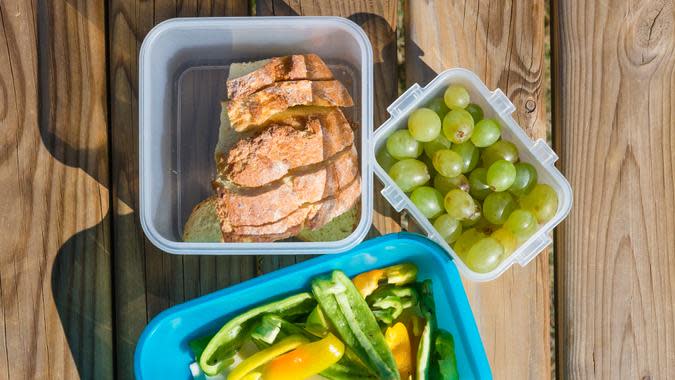
Pack Snacks Everywhere
Kaden’s next frugal living tip is essential for families with children but can help anyone. She advised her audience members to pack snacks whenever they leave the house.
Sometimes, you or your kids will get hungry while you’re out and won’t want to wait until you get home to eat. Buying snacks on the go — like at a gas station or fast food restaurant — is expensive, though. That’s when packed snacks can save the day. If you already have snacks on hand, you can satisfy your hunger without worrying about finding and buying costly food.
Your packed snacks will save you money and probably be healthier, too.

Buy Greeting Cards in Bulk
You can spend over $10 on fancy greeting cards and even basic cards may cost between $4 and $6 these days. If you send a lot of cards, those costs will add up quickly.
Instead of picking out an individual card each time you have an occasion to celebrate, Kaden suggested buying greeting cards in bulk. Buy a variety pack with some birthday cards, thank-you cards and blank cards so you always have an appropriate card available when you need one.
“For $20, you can get 100 cards. Say you send 10 cards a year; they’re, minimum, $4 — that’s 40 bucks right there,” Kaden said. “For half that price, you can have 100 cards.”
You’ll save over $3 per card at those prices.
Find Out: 6 Valuable Everyday Items You Should Never Throw Away
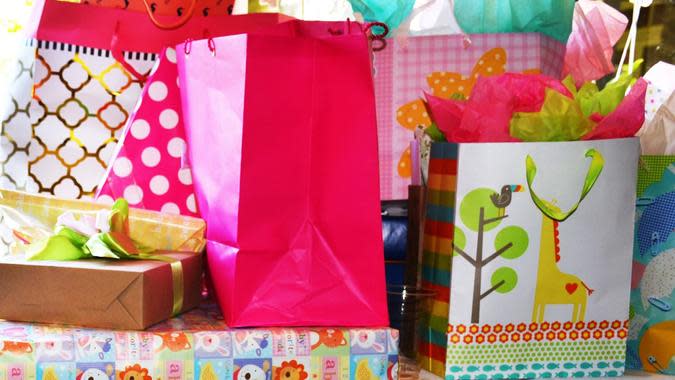
Keep a Gift Closet
In 2023, U.S. consumers expected to spend an average of more than $650 on holiday gifts alone, according to a press release by the Conference Board. When you add birthday presents, anniversary gifts and other presents, gift giving can be expensive.
To help reduce your spending on gifts, Kaden recommended keeping a small gift closet. A gift closet is any collection of gifts you have already bought but haven’t given out yet — it doesn’t need to be an actual closet in your home. Throughout the year, as you find great deals on items you think friends or family might like, buy them and add them to your gift closet.
Purchasing these items when they’re on sale will help you save money. Your recipients still get gifts they’ll love, and you get to save some money.

Buy Seasonal Produce
Fruits and vegetables are vital to any healthy diet, but they can be expensive. Kaden recommended buying seasonal produce to save money.
When produce is in season where you live, it’s more readily available, so it’s cheaper. You’re not paying extra for the produce to travel halfway around the world to get to your supermarket.
Look up the peak growing seasons for your favorite fruits and vegetables. Try to buy these items when they’re in season to save money. Check the frozen aisle for a more affordable option if you want something that isn’t in season.

Use Free Financial Tools
Setting up a budget and managing your money can be daunting. Luckily, there are many free websites and apps available to help people manage their finances.
Kaden said she uses EveryDollar, a zero-based budgeting app that lets you allocate every dollar of your income to specific expenses in your budget. If zero-based budgeting doesn’t work for you, try other tools until you find one that suits your needs. Even a simple Google Sheets file can help you keep track of your expenses and income.
Check Out: 7 Appliances Frugal Homeowners Steer Clear Of

Embrace Minimalism
Consumers today are bombarded with ads everywhere they look, from television to social media. All these ads tell you that you need more and more stuff to have the life you want. Overconsumption is tempting, but it will get in the way of reaching your financial goals.
Kaden suggested embracing minimalism instead. “A minimalist lifestyle can help you have fewer possessions that you actually love and use and it makes your life less stressful.” Buying fewer items means fewer expenses and more disposable income to put toward your goals.

Join a Buy-Nothing Group
A buy-nothing group is a community of local people who give and receive free items. They don’t purchase items from one another or even barter — all the items are truly free.
These groups mostly operate on Facebook, but Kaden noted that you can also find a community through the Buy Nothing Project website. If someone in the group is giving away something you need, you can reach out and get it for free.
You may think people would give away only damaged or unappealing items for free, but that isn’t the case. People have scored great items from buy-nothing groups, including bookshelves, mint-condition couches and expensive shoes. You’re saving money whenever you get something from a buy-nothing group that you would have otherwise had to purchase.
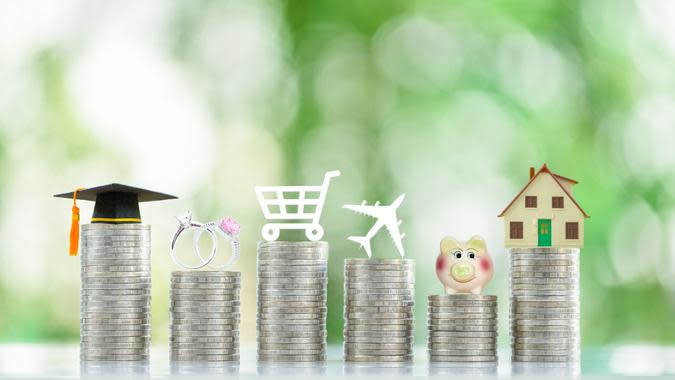
Prioritize Essential Expenses
There are some things you simply can’t live without: food, housing, utilities and transportation, to name a few. These are your essential expenses, so you should start by making sure you have enough money to cover them each month.
Kaden said essential expenses are “the core of how I build my budget.” After you prioritize these expenses, you can adjust your budget to support your financial goals. For example, if you’re trying to save money for a down payment, Kaden suggested limiting your discretionary spending and reducing your luxury purchases for a little bit.
See Next: Here’s the Salary Needed to Actually Take Home $100K in Every State

Practice Gratitude
Practicing gratitude for the things you already have can help curb the urge to buy more items you don’t need. On a bad day, Kaden goes around her home, pointing out mundane items like her couch and intentionally feeling grateful for them.

Avoid Debt
If you want to build wealth and be financially free, consumer debt will only get in the way. Americans collectively owe more than $1 trillion in credit card debt alone, which threatens their financial security, according to CNBC.
Try to avoid going into debt whenever possible. Save up for purchases rather than putting them on your credit cards or taking out loans. If you already have debt, Kaden advised you to “do your best to get rid of it as soon as you can.”

Use a Budget
Budgeting isn’t glamorous, but it will give you a deeper understanding of your finances. By setting strict spending limits across different categories, you can avoid overspending. You’ll be more intentional with your money.
Use a budgeting app like Kaden or jot down your budget on paper, whichever method works for you. Refer back to your budget throughout the month to stay on track.
Explore More: Here’s the Income Needed To Be in the Top 1% in All 50 States

Read Personal Finance Books
There’s always more to learn about managing your money. You’ll find great insights in personal finance books, which may even change your perspective.
Kaden’s favorites include “The Total Money Makeover” by Dave Ramsey, “The Simple Path to Wealth” by J.L. Collins and “Rich AF” by Vivian Tu. If you’re not a big reader, consider listening to the audiobook version instead.
More From GOBankingRates
6 Things to Try This Week if You're Behind on Your Savings Goals
4 Reasons Retired Women Need More Money Than Men -- And What To Do About it
This article originally appeared on GOBankingRates.com: Kate Kaden’s 18 Frugal Living Tips To Potentially Save You Thousands